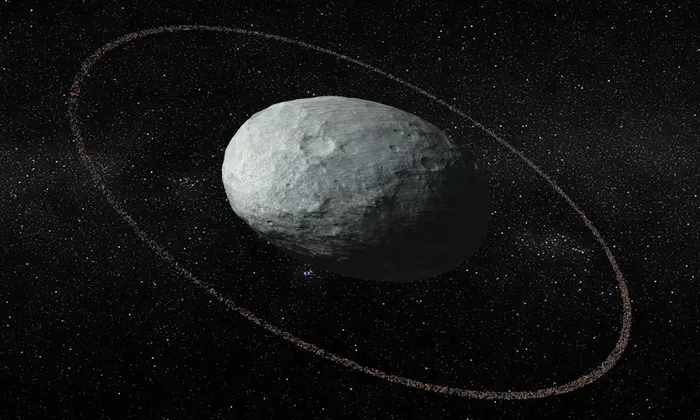By: Andrew Lu
Recently, scientists discovered a strange new dwarf planet lying around 4 billion miles from the sun. Quaoar has rings similar to Saturn’s. Gravitational calculations suggest that there shouldn’t be rings.
“That’s very strange,” said Bruno Morgado, a professor at the Federal University of Rio de Janeiro in Brazil. Dr. Morgado is the lead author of a paper published in Nature on Wednesday that examines the rings around Quaoar. The ring appears very scattered and uneven, with some places only a few miles wide, while others span a few hundred miles. It is estimated that if the ring was collected into a single object, it could form a moon around 3 miles wide.
Quaoar has a diameter of about half of Pluto’s and one-third of our moon’s. Scientists say that it is likely to be big enough to be considered a dwarf planet since it most likely has enough gravity to be a sphere, but they can’t be sure. Images from various telescopes only show a blob of the planet, but it is known that the blob has a moon, Waywot.
Quaoar orbits the sun on the Kuiper belt, which is beyond Neptune, but much closer than many other dwarf planets in the scattered disc and Oort cloud.
The rings weren’t visible in the stellar images. In fact, the scientists found it indirectly, watching distant stars pass by, being blocked by Quaoar. They observed that directly before and after the stars passed by, the stars were dimmed, because the rings block just a bit of the light from the stars. Therefore, Dr. Morgado and his team concluded that the dwarf planet had rings.
For decades, scientists thought that small objects, like Quaoar, were too small to even have moons. But in recent days, scientists have been finding a lot of new dwarf planets with rings that essentially are moons that are way too small.
In 1848, Edouard Roche, a French astronomer, calculated what is known as the Roche limit. It states that within the limit, anything would get pulled apart and form a ring, and any ring outside of the limit could eventually collect into a moon. In most rings in our solar system, the rings lie either inside or barely outside of the Roche limit. But Quaoar’s rings lie 2,500 miles away from the planet, and the calculated Roche limit was around 1,100 miles. According to scientists, the rings should have collected into a moon and should do so in 10 to 20 years in the current gravitational state.
But the problem is, there is still a ring, and it shows no sign of coalescing into a moon. A potential explanation for this a maybe Weywot disturbs the particles from forming a moon, or possibly that based on how cold the particles are, they don’t stick together as well.











